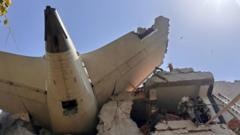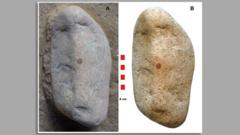Archaeologists have uncovered remnants of London’s first public building, believed to be a basilica from Roman times, during excavations under a commercial site scheduled for redevelopment. The discovery, described as a significant piece of London's history, highlights the building's role in administrative functions and community governance nearly two millennia ago.
Ancient Roman Basilica Discovered Beneath London Office Block

Ancient Roman Basilica Discovered Beneath London Office Block
A significant archaeological find reveals the foundation of a 2,000-year-old basilica, once central to Roman London's governance, beneath a high-rise in the financial district.
Excavations within the basement of a commercial structure in London’s bustling financial sector have confirmed the presence of a basilica dating back around 2,000 years. Identified as London’s earliest public building, the basilica was an essential feature of the Roman forum, serving as the "first town hall," according to Sophie Jackson, a director at the Museum of London Archaeology.
The archaeological team began their work after receiving approval to demolish the existing office building to make way for a new 32-story mixed-use tower. Initial findings, which began over the summer and concluded a few weeks ago, included “massive foundations and walls” constructed from flint, ragstone, and Roman tile, with some structural pieces measuring over 33 feet long, three feet wide, and 13 feet deep.
These substantial remnants suggest that the basilica stood at a height of three stories and was strategically located on elevated ground, indicating its significance within the city. Archaeologists speculate that this structure was not just a physical space but also a political center where administrative tasks were conducted and financial resources could have been managed.
Further investigations indicate the presence of a tribunal area within the basilica, where magistrates would convene on a raised platform to adjudicate legal cases and make crucial governmental decisions, according to Jackson. This finding offers an insightful glimpse into the complexities of urban life and governance in ancient Roman London, revealing layers of history long buried beneath modern infrastructure.
The archaeological team began their work after receiving approval to demolish the existing office building to make way for a new 32-story mixed-use tower. Initial findings, which began over the summer and concluded a few weeks ago, included “massive foundations and walls” constructed from flint, ragstone, and Roman tile, with some structural pieces measuring over 33 feet long, three feet wide, and 13 feet deep.
These substantial remnants suggest that the basilica stood at a height of three stories and was strategically located on elevated ground, indicating its significance within the city. Archaeologists speculate that this structure was not just a physical space but also a political center where administrative tasks were conducted and financial resources could have been managed.
Further investigations indicate the presence of a tribunal area within the basilica, where magistrates would convene on a raised platform to adjudicate legal cases and make crucial governmental decisions, according to Jackson. This finding offers an insightful glimpse into the complexities of urban life and governance in ancient Roman London, revealing layers of history long buried beneath modern infrastructure.




















